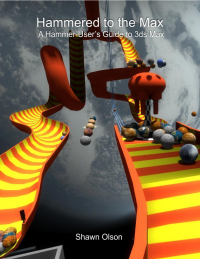Wall Worm
Wall Worm is a script and tool developer focused on 3ds Max and various Max-related pipelines. Historically, Wall Worm was devoted soley to optimizing the Source Engine asset pipeline. The Wall Worm toolset itself is a Source-only toolset. However, many new tools are generic in nature (for any game engine, VFX, VIZ, etc), such as the CorVex plugin and most other new tools.
See the official Autodesk blog feature about Wall Worm developer Shawn Olson, Wall Worm and Black Mesa: From Black Sheep to Black Mesa and Beyond.
Common Destinations
Wall Worm tools allow you to create assets for Source and Source 2 in a way that was not possible before. You can build models, textures and levels inside one environment (3ds Max) and compile them straight into Source. Wall Worm tools have been used in the pipelines of many games including Dear Esther, Black Mesa and by designers of CS:GO Operation maps and many more.
Wall Worm works in collaboration with other 3ds Max/Source developers to help enhance all the tools available to designers and mod teams.
Featured Articles
On the Grid
Information and videos on using the grid in 3ds Max for Source Engine Level Design.
Exporting Correct Smoothing on Models
Understanding Smoothing Groups and Explicit Normals
Discussion on smoothing groups and explicit normals and how they relate to Source.
Latest Articles
Making $jigglebones in 3ds Max for Source
$jigglebones are bones that can automatically generate secondary motion without being animated. Making a $jigglebone in WWMT requires you to use the hierarchy tab in the command panel, which may be a new area for less experienced modelers.
Making Ragdolls in 3ds Max for Source
Making a ragdoll requires you to use the hierarchy tab in the command panel, which may be a new area for less experienced modelers. Watch the video here to get a basic overview of how to make a ragdoll for Source.
Generating LODs
The Level of Detail Generator on the Level of Detail Tools Rollout lets you generate LOD models from the root mesh. The tool will make lower-res versions of your model so that less polygons are rendered in-game when players move farther away.
Export Body Groups | $bodygroup
You can export body groups ($bodygroups) directly into Source in 3ds Max.
Export Multiple Texture Skins
You can give your model multiple skins (textures) so that the same mesh can look differently in different uses.
Export Textures
How to export your model textures from 3ds Max to Source.
Collision Hulls in 3ds Max for Source
Using WWMT in 3ds Max to create your model's collision hull with the Quick Hull feature.
Exporting Your Static Prop
Basic explanation on using WWMT to export your static prop into Source.
Preparing Your Model
Preparing your model to export your model with WWMT in 3ds Max to the Source Engine.
Using WWMT
Articles on using the Wall Worm Model Tools.






